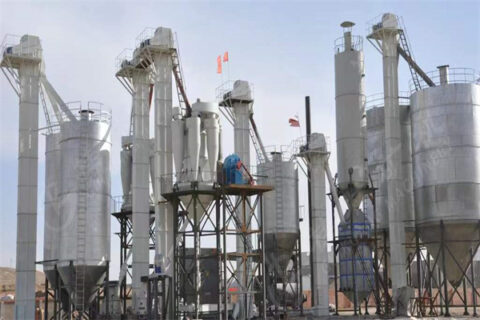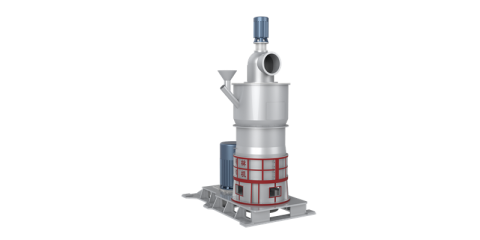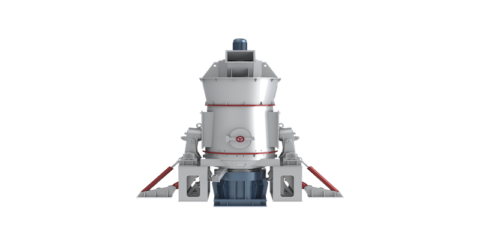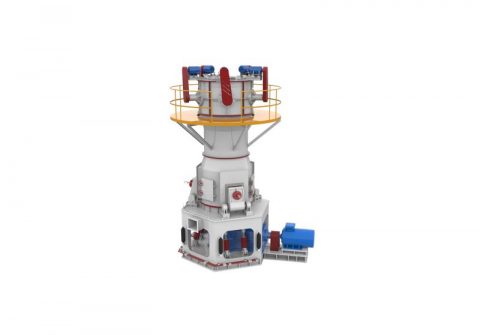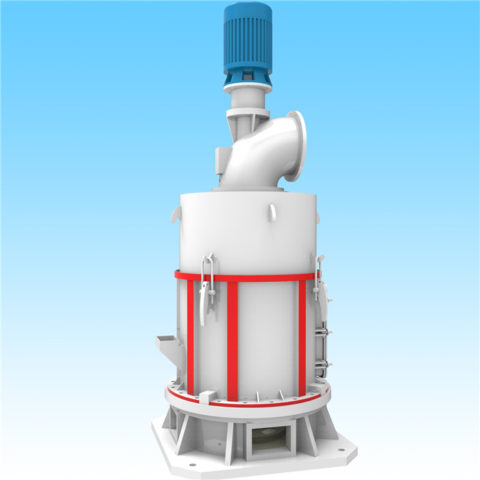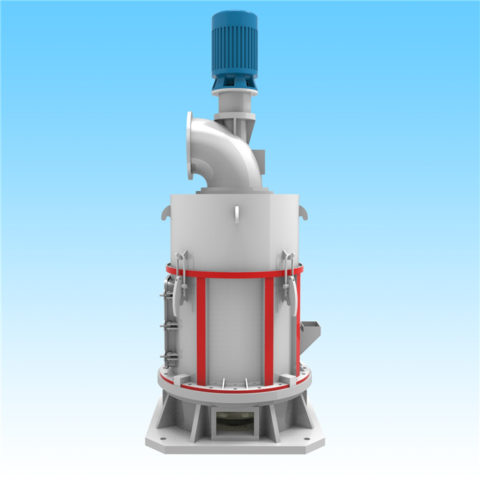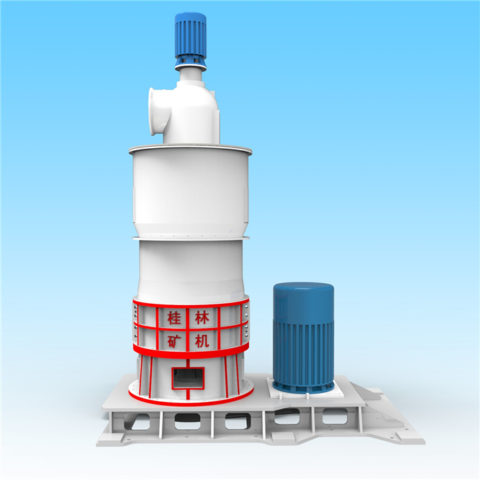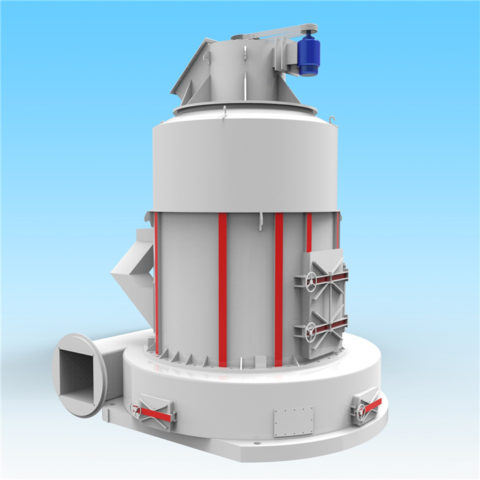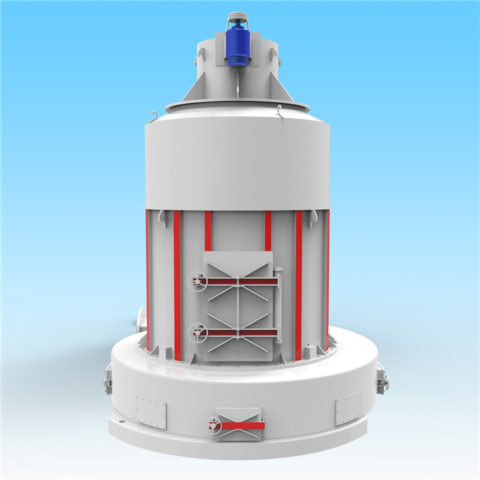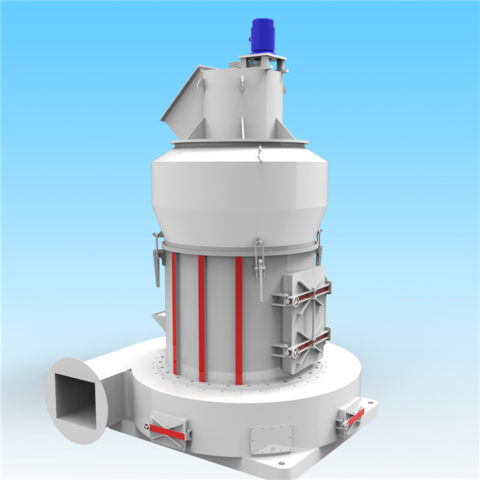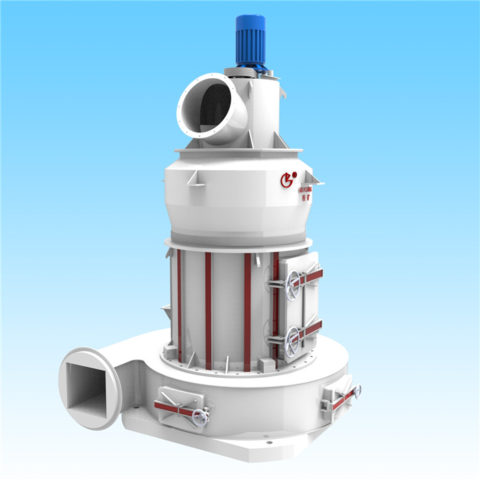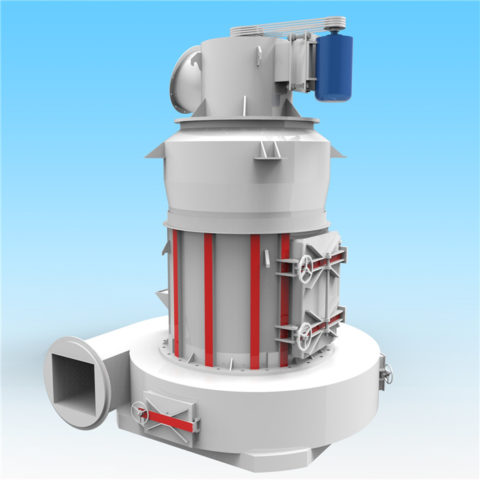The ultrafine ring roller mill is an ideal equipment for dry production of ultrafine heavy calcium powder. As an important inorganic filler, calcium carbonate is one of the three fillers in the production of chemical products, which is widely used. With the rapid development of China’s economy, the requirements for the grade and fineness of calcium carbonate are getting higher and higher. Calcium carbonate ultrafine ring roller mill has also been more and more widely used. Guikuang Machinery, as the manufacturer of calcium carbonate ultra-fine mill, will introduce the advantages of using ring roller mill to grind calcium carbonate.
In the past few years, domestic heavy calcium processing mainly used calcium carbonate Raymond mill, and the fineness of its processed products was relatively coarse, generally in the range of 200~400 meshes. In recent years, although the calcium carbonate Raymond mill has been technically modified to increase the product fineness to 600~800 meshes, it still cannot meet the user’s requirements, the product added value is low, and resources cannot be used more effectively. New type calcium carbonate ultrafine ring roller mill: when the particle size of crushed feed is not more than 20mm, the moisture content is not more than 8%, and the brittle materials with Mohs hardness below grade 6, the calcium carbonate ultrafine ring roller mill can be used to make d97<10 μ M fine powder, and has the following advantages:
The first advantage of grinding calcium carbonate with ring roller mill is that it has low investment and high benefit. Compared with large complete sets of equipment, the investment is saved by nearly half. At present, there is a domestic production process of ball milling plus grading for the production of ultra-fine heavy calcium powder, and the product fineness can reach d97<10 μ m. To produce products of the same fineness, GKHcalcium carbonate ultra-fine ring roller mill is selected, with an annual output of 10000 tons and a saving of 60%.
The second advantage of grinding calcium carbonate with ring roller mill is high classification accuracy. The internal grading device is adopted, and the grading wheel has unique structure, good grading effect, and no large particle pollution. A mining company uses the same calcium carbonate ore, one of which is the vertical grinding production line made in Taiwan, the other is the GKH calcium carbonate ultra-fine ring roller mill, and the same Malvern particle size analyzer made in Britain is used to detect the product fineness, which can achieve the expected product fineness (d97=12 μM).
The third advantage of grinding calcium carbonate with roller mill is low energy consumption. GKH series calcium carbonate ultrafine ring roller mill has comprehensive mechanical crushing properties such as rolling, grinding and impact. It is a truly efficient and energy-saving ultrafine crushing equipment, especially suitable for deep processing of non-metallic minerals.
Advantages of grinding calcium carbonate with ring roller mill: stable and reliable operation. The transmission spindle of GKH series calcium carbonate ultrafine ring roller mill is driven by reducer, which has low energy consumption, high efficiency and efficiency>96%.
The fifth advantage of grinding calcium carbonate with a roller mill is high specific surface area. The specific surface area of powder is the surface area occupied by unit mass, in m ‘/g. It is an important indicator of the ability to participate in chemical reactions. With large contact surface, the synthesis process is more perfect and easier to control. The utilization rate of calcium carbonate is higher, and the consumption rate of powder is lower, indicating its high activity. Therefore, the specific surface area has become an important indicator of the activity of ultrafine calcium carbonate powder. GKH ring roller mill can produce specific surface area of 2.24m/g (d97=10μm) -3.04m/g (d97=4μm) ultrafine powder.
Working principle of calcium carbonate ultrafine ring roller mill: The calcium carbonate ultrafine ring roller mill uses the principle of impact, extrusion and grinding to crush materials. There is a large active gap between the grinding ring installed on the grinding ring support and the pin shaft. When the support of the grinding ring rotates with the spindle, the grinding ring is thrown to the grinding ring under the action of centrifugal force, and the inner wall of the grinding ring is compressed and rotates around the pin shaft. When the material passes through the gap between the grinding ring and the grinding ring, it is crushed by the impact, extrusion and grinding of the grinding ring. Under the action of gravity, the crushed materials fall onto the throwing tray and are thrown into the air stream to enter the classification room for classification. The qualified fine powders are collected by the rear channel collection system through the classification wheel. The coarse materials are thrown into the diversion ring and fall back into the grinding room for crushing. The grinding ring is distributed in single layer or upper and lower layers. When the double-layer grinding ring crusher is working, the materials will be crushed again when passing through the second layer grinding ring and the grinding ring. Therefore, the materials will be crushed fully and the product fineness is qualified.

